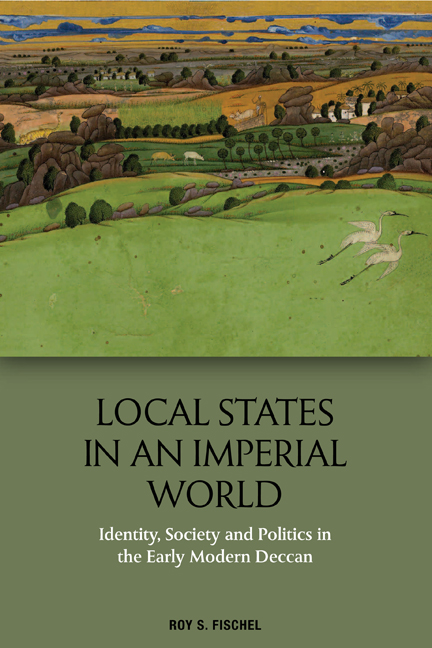Book contents
- Frontmatter
- Contents
- List of Illustrations and Tables
- Note on Transliteration
- Acknowledgements
- Introduction
- 1 Mapping the Deccan
- 2 The Sultanates and the Deccan
- 3 Foreigners, Locals and the World
- 4 Locality, Vernacular and Political Language
- 5 Limitations of the Deccani System
- 6 Conclusion: Hoopoes and Falcons
- Bibliography
- Index
Introduction
Published online by Cambridge University Press: 26 September 2020
- Frontmatter
- Contents
- List of Illustrations and Tables
- Note on Transliteration
- Acknowledgements
- Introduction
- 1 Mapping the Deccan
- 2 The Sultanates and the Deccan
- 3 Foreigners, Locals and the World
- 4 Locality, Vernacular and Political Language
- 5 Limitations of the Deccani System
- 6 Conclusion: Hoopoes and Falcons
- Bibliography
- Index
Summary
Travelling across the Deccan Plateau of India, one encounters a somewhat confusing environment. On entering the region, say crossing the steep Sahyadri Mountains on the Mumbai–Pune Expressway, the landscape changes only slowly and gradually. Even if not as monotonous as the great Gangetic Plains of north India, the terrain remains relatively uniform for long distances. Yet, within this vast plateau, cultural markers change sharply and rapidly. For one, the region hosts some of India's shiniest IT centres, most notably in Hyderabad and Pune, alongside of some of India’s most impoverished rural communities. Beyond this cliche of India's economic disparities, the cultural and linguistic diversity of the region is easily noticeable. When crossing almost invisible state borders, which do not usually follow natural features, the script on the road signs changes immediately and one enters a visibly different linguistic domain. However, these seemingly uninterrupted linguistic spaces are not as even as they look. The region is dotted with towns where the dominant signage is in a language (and script) other than that of the state. In certain places, Urdu in Nastaliq and Hindi in Devanagari are predominant. Even these are not simply islands in the wider space. On the contrary, spaces are shared between all linguistic markers. They are occupied and visualised by scripts that link them to separate traditions. Even the Char Minar, the most recognisable landmark of the Muslim history of Hyderabad, shares its space with the Sri Bhagyalaksmi Temple, decorated by saffron flags and with signage in English, Devanagari and Telugu but (strategically) not in Nastaliq.
Linguistic diversity not only marks separated places, but also indicates connections. In certain settlements around the Deccan, for example, in sites in Aurangabad (Maharashtra), Hyderabad (Telangana) or Gulbarga (Karnataka), one is likely to see signs in Nastaliq, creating visual links between those places. Another level of cross-border linguistic connectivity is created by the use of English, and to some degree Hindi, both visible everywhere even if not spoken by all. If we tried to map the Deccan according to language use, then each language would demonstrate a distinct geography.
- Type
- Chapter
- Information
- Local States in an Imperial WorldIdentity, Society and Politics in the Early Modern Deccan, pp. 1 - 25Publisher: Edinburgh University PressPrint publication year: 2020



